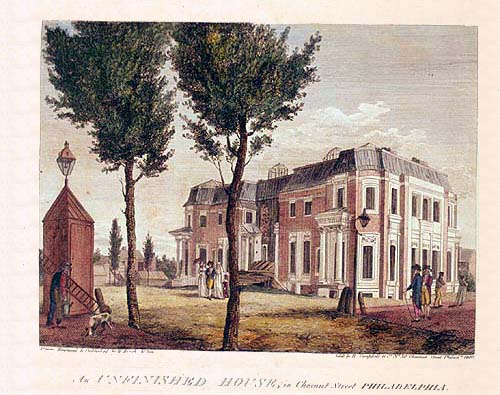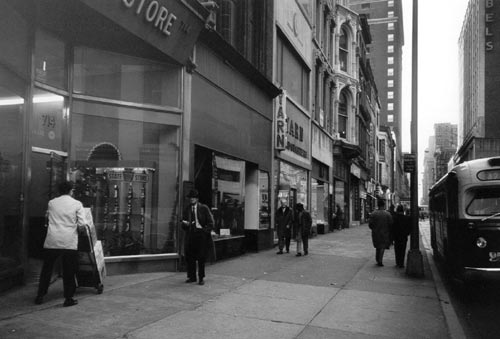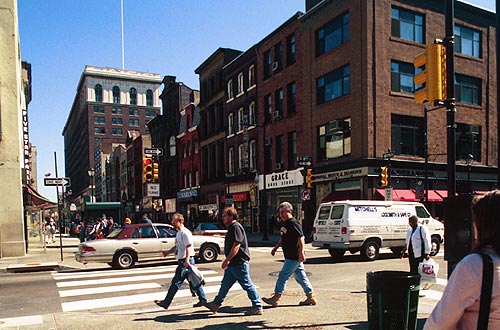About 1794, when his fortunes were at their height, Robert Morris, signer of the Declaration of Independence, financier of the American Revolution, principal owner of the Empress of China, America's first ship to trade with the Far East (1784), member of the Federal Constitutional Convention (1787) and Senator of Pennsylvania (1789-95), purchased the entire square between Chestnut and Walnut Streets from Seventh to Eighth. On that site he began building this grand marble and brick house from designs of Major Pierre Charles L'Enfant (planner of the capital city of Washington). Before it was completed Morris' western land speculations brought him to ruin. During the summer of 1797 he took refuge from his creditors at his summer villa on the Schuylkill River which he called, The Hills. He remained there until the winter of 1798 when he was taken to debtor's prison (Walnut Street Jail, see Plate 24). Soon his summer house was destroyed by fire. At a sheriff sale in 1799 a portion of his country estate (140 acres) was purchased by shipping-merchant Henry Pratt who built on the site the splendid Federal style house known as Lemon Hill (1799-1800.) Today it is one of the Fairmount Park house museums administered by the Philadelphia Museum of Art. While imprisoned (1798-1801) he was occasionally visited by his close friend George Washington and others of high standing. The unfinished house on Chestnut Street became known as "Morris' Folly." Not being saleable, it was demolished about 1800 and the materials were sold for the benefit of creditors. Morris, who was married to the sister of Bishop White, rector of Christ Church, died as a nearly forgotten man in 1806. He was buried in the yard of Christ Church.
Photographs
The Chestnut Street Association placed a tablet on Numbers 714-16 Chestnut Street to mark the site of the Morris house. The 1960 photograph was taken near the tablet looking west, and the 2000 view was taken from the northwest corner of Eighth and Chestnut looking east to correspond with the original engraving. The most distinctive edifice in the 2000 view is the tall Public Ledger Building on the south side of Chestnut Street between Sixth and Seventh (BG-M). In 1927, Cyrus H. K. Curtis, owner of The Curtis Publishing Company and the Philadelphia newspaper, Public Ledger, built it as a home for his paper. Horace Trumbauer, one of the designers of the Philadelphia Museum of Art, was the architect. The building is an architectural companion to the Curtis Publishing Company's building (now Curtis Center) just to the south on Sixth Street. Founded in 1836 the Ledger was innovative. It was the first to send reporters out to find the news, to have newsboys selling papers on the street and to provide financial news on a regular basis. Curtis bought the paper in 1913 and made it one of nation's most respected. He died in 1932, and by 1942 the paper was insolvent.
Back Next




